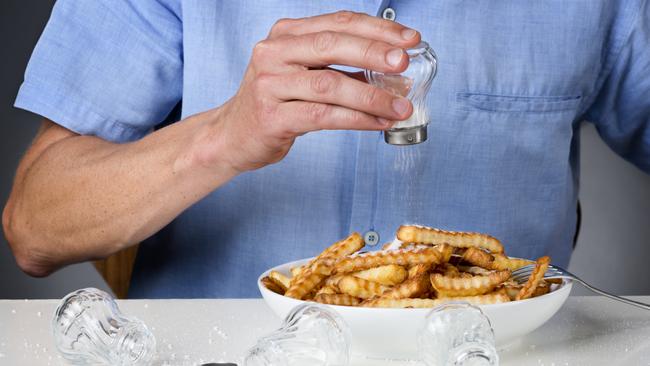How to improve your blood pressure — in three months
It’s a silent killer that can cause issues ranging from heart attacks to kidney disease. But these lifestyle changes will make a dramatic difference.

About one in three UK adults (32 per cent) are thought to be living with high blood pressure, or hypertension, yet for as many as four million people in England it remains undiagnosed.
A “silent killer”, hypertension has few symptoms and takes hold insidiously, and if left untreated can lead to fatal heart attacks, kidney disease and vascular dementia.
Yet a recent survey for NHS England found that among those midlifers who were most at risk, renewing insurance or getting a car MoT were ranked as a higher priority than a blood pressure test.
“Up to 50 per cent of the adult population has never had their blood pressure checked,” says Dr Oliver Guttmann, consultant cardiologist and honorary associate professor at Barts Health NHS Trust and the HCA Wellington Hospital. “It is something many people overlook, although ultimately it can be to their cost.”
With each heartbeat, blood is pumped around the body through arteries that contract and relax as it pushes against the sides of the vessel walls. A certain amount of pressure is needed to ensure blood flows fluidly and effectively, providing energy and oxygen where required.
But if blood pressure is too high, it causes strain on the arteries and heart, increasing the risk of strokes, heart attacks and other health problems.
“High blood pressure can damage arteries in the back of the eye, resulting in blurred vision and sight problems,” Guttmann says. “Over time it can also harm blood vessels so that blood flow to organs such as the kidneys is reduced, potentially causing long-term damage.
“Although there can be a genetic influence, too many of us eat too much salt and ultra-processed foods, drink too much alcohol or do too little exercise, all of which are risky for our blood pressure.”
Good news of sorts is that while some people with hypertension will need medication, many can reduce blood pressure naturally.
“It won’t happen overnight and I usually tell my patients that it will take about the same time to reverse the problem as it took to cause it in the first place,” Guttmann says.
“But with the right habits in place, often within three months you can make a dramatic difference to the readings.”
Here’s how:
VARY YOUR EXERCISE
Some forms of physical activity have particular benefits for blood pressure, helping to reduce inflammation and improve the performance of the heart. For a study published in the British Journal of Sports Medicine, Dr Jamie O’Driscoll, a researcher in cardiovascular physiology at Canterbury Christ Church University, ranked exercise types according to the blood-pressure busting ability.
Top of his rankings was isometric exercise that entails holding a muscle under tension with no movement for a set time. Plank holds, low squats and wall sits are all examples. “When you release an isometric hold, there is a sudden increase in blood flow as the blood vessels dilate again,” he says. “You don’t get the same effect with other forms of exercise.”
In second place was running, which he says “improves blood pressure and also your body’s ability to utilise oxygen”, which is also important for preventing cardiovascular disease.
Bottom of O’Driscoll’s pile for blood pressure was high-intensity interval training, the short, sharp bursts of all-out effort that leave you breathing hard and sweating profusely.
“HIIT produced the lowest reductions in blood pressure, but still had some impact,” he says.

CHECK YOUR BLOOD PRESSURE AT HOME
Advice from the NHS is to get blood pressure tested every five years once you get to 40, and you can get tested free of charge at a community pharmacy from this age. But it is a good idea to keep tabs on your blood pressure more frequently. Guttmann says DIY equipment varies widely but monitors that measure blood pressure at your upper arm, not your wrist or finger, are recommended by the British Heart Foundation.
“Some of the really cheap devices don’t work well, but if you spend around pounds 20-pounds 30 you will get one that does the job,” Guttmann says. “I suggest my patients have their blood pressure checked in a pharmacy before using a home device to make sure the readings are the same and then to keep tabs on it.”
Don’t become obsessed with checking it several times a day or week because blood pressure ebbs and flows, although women taking HRT and people with heart disease in the family or with any medical issues should do tests more regularly.
“If you don’t have existing high blood pressure, then once every couple of weeks or even every month is fine,” Guttmann says. “When you do check, sit down for ten minutes first and don’t have a coffee or do anything stressful just before the test, and do get a medical expert to check it every so often.”
WHAT ARE YOU LOOKING FOR?
A blood pressure reading consists of two numbers. The top number is your systolic pressure, the highest level your blood pressure reaches during a heartbeat, and the bottom number is your diastolic reading, the lowest level your blood pressure hits between heartbeats.
A normal blood pressure range is between 90/60mmHg and 120/80mmHg.
Guttmann says a one-off high reading is usually nothing to worry about, but “if it remains high for two or three weeks you should arrange to see your GP or practice nurse”.
For the over-80s, a target blood pressure is under 150/90mmHg (or 145/85mmHg when measured at home), which is adjusted to account for arteries stiffening with age.

EAT EVEN LESS SALT
Although our salt consumption has dropped by 15 per cent in a decade, we could do better (the average adult consumes 8.1g a day, which is more than the recommended limit of 6g).
According to the charity Blood Pressure UK, eating too much salt remains “the single biggest cause of high blood pressure in the UK” and it warns that high intakes can interfere with blood pressure drugs, making them less effective.
“Salt intakes are still much higher than they should be,” Guttmann says. “If you have a lot of salt in your diet, fluid is pulled back into the bloodstream, causing extra pressure on blood vessel walls so that blood pressure rises.”
EAT MORE BANANAS, LENTILS, POTATOES AND AVOCADOS
Research has shown that a potassium-rich diet containing foods such as bananas, avocados, potatoes, dates, leafy greens and lentils can help to lower blood pressure. “Potassium plays a role in blood pressure control,” says the nutritionist Rhiannon Lambert, author of The Science of Nutrition. “It does this by helping the body to remove salt from the bloodstream.”
For a recent study, scientists at the George Institute of Global Health at Imperial College London analysed data from 20,995 participants, all of whom had high blood pressure or had suffered a stroke. Over five years, half of the participants were given normal table salt while the rest were asked to use a product in which some of the sodium was substituted for potassium. Results in the Journal of Human Hypertension showed that the potassium-enriched salt had a powerful blood-pressure-lowering effect, with the researchers suggesting that up to 80 per cent of the benefit to blood pressure was down to the increase in potassium rather than a reduction in salt.
“High levels of sodium intake and low levels of potassium intake are widespread, and both are linked to high blood pressure and greater risk of stroke, heart disease and premature death,” said Dr Polly Huang, a senior data analyst on the paper. “Using a salt substitute where part of the sodium chloride is replaced with potassium chloride addresses both problems at once.”
AIM TO GET SEVEN HOURS’ SLEEP
Too little sleep won’t just leave you tired and tetchy. Over time it could cause your blood pressure to rise. In the most recent study to look at the link between sleep patterns and hypertension, researchers presenting at the American College of Cardiology’s Annual Scientific Session in March looked at more than a million people from different countries who had no history of hypertension.
They showed that getting less than seven hours of shut-eye regularly was associated with a 7 per cent increase in blood pressure but that risk rose to 11 per cent in people who routinely slept for five hours or less.
Although they didn’t look at why poor sleepers were more prone to the condition, the researchers suggested that lifestyle habits and stress likely played a significant part.

DO WALL SITS FOR EIGHT MINUTES
Of all isometric exercises, wall sits reign supreme for blood pressure, O’Driscoll says, because they engage the hamstrings, quadriceps and glutes, which are some of the body’s largest muscles. If you find them tough – and who doesn’t? – he recommends starting with a scaled-down version of the exercise.
“Don’t feel you have to go in with a 90-degree angle at the knees,” he says. “Better to widen the knee angle and to hold for two minutes at a time than to shorten the duration of the exercise.” His findings suggest that a total of eight minutes per workout – repeating four sets of a two-minute isometric hold, with two minutes’ rest in between – three times a week is enough to have a powerful effect on preventing hypertension. “Isometrics such as wall sits are a complementary form of exercise that should be done on top of general activity,” he says. “But it can have a powerful impact on blood pressure.”
STRETCH OR DO YOGA FOR HALF AN HOUR
Studies have shown that stretching reduces stiffness in blood vessels so that there’s less resistance to blood flow. Since it’s resistance to blood flow that increases blood pressure, it follows that regular flexibility exercises can help to reduce hypertension.
For one study in the Journal of Physical Activity and Health, researchers from the University of Saskatchewan in Canada asked people with mild hypertension to add either a brisk daily walk or to spend 30 minutes a day stretching the body’s larger muscles, including the quadriceps and hamstrings, on five days a week.
A control group made no changes to their routine. After eight weeks it was the stretching group that had the biggest reductions in blood pressure. “Stretching and yoga can also have the benefit of reducing stress,” O’Driscoll says. “So it can pay to take time out for more mindful practices.”
DO YOU NEED MEDICATION?
A reading of 140/90mmHg or higher over several weeks is considered the cut-off point for diagnosing high blood pressure.
“If your blood pressure is very high, then medication will likely be prescribed,” Guttman says. “Most of them work by helping the blood vessels to relax and widen so that blood pressure is lowered.”
The Times







To join the conversation, please log in. Don't have an account? Register
Join the conversation, you are commenting as Logout